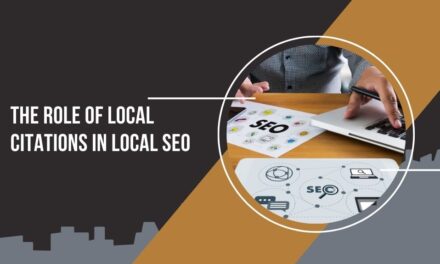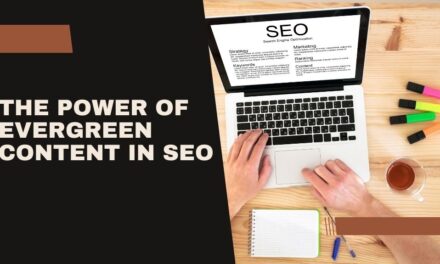SEO has moved beyond just bringing people to your site. In ecommerce the goal is not traffic but transformation; turning visitors into paying customers. Ecommerce conversion SEO is about aligning visibility with buyer intent, so that when someone finds your site they are ready to buy. When someone searches for a product they are often just a few clicks away from buying it. Good optimisation gets you in front of them at that moment. Improving search visibility is the first step but the ultimate measure of success is conversion rate.
Every click has value and a strong product SEO strategy turns that value into profit. Businesses that get this connection can bridge the gap between attraction and action, optimise for search engines but for human behaviour and business growth.
Why Traditional SEO Isn’t Enough for E-commerce
Most e-commerce owners still apply general SEO tactics without considering how online shoppers behave. Traditional SEO is all about rankings but ecommerce conversion SEO is about building a journey from search query to checkout. Generic keyword optimisation will bring visitors but without tailored product descriptions, user trust signals and optimised landing pages conversions will be low. Effective search visibility in online retail means targeting commercial intent keywords, optimising product schema and fast loading mobile experiences.
Shoppers make decisions in seconds and if pages don’t inspire confidence they move elsewhere. That’s where a strong product SEO strategy makes the difference, combining relevance, usability and persuasion. The ecommerce landscape rewards sellers who treat optimisation as part of the buying experience not just a technical tick box.
The Power of Keyword Intent in Driving Sales
Not all keywords are created equal. Some attract browsers, others attract buyers. Understanding this is key to ecommerce conversion SEO. Informational keywords (like “how to choose a laptop”) may bring in traffic but transactional keywords (like “buy laptop online”) bring in buyers. A successful product SEO strategy is about identifying and optimising for high intent phrases that match real consumer searches. Using tools like Google Search Console or keyword planners helps businesses find out what their audience is really looking for.
Equally important is aligning search visibility with purchase motivation. When content, product titles and meta descriptions match intent, the conversion rate goes up. By mapping every keyword to a stage of the customer journey, ecommerce stores create search paths that lead to sales not empty visits.
Crafting High-Conversion Product Pages
The core of every online store is the product page. To drive sales these pages need to do more than just inform; they need to persuade. Ecommerce conversion SEO optimises titles, descriptions and images for both users and search engines. A good product SEO strategy includes detailed copy that talks about benefits not just features and weaves in keywords naturally. Rich media elements like 360° views, demo videos and user generated content adds credibility and engagement. And elements like clear pricing, visible stock availability and customer reviews feed structured data to Google.
The more context Google has the better they can match your products to relevant queries. Every product page should be a virtual salesperson; fast, informative and persuasive enough to turn casual browsing into buying.
Technical SEO Foundations for E-commerce Success
Every successful online store has a solid technical foundation. No matter how great the products, a poor site will ruin the customer experience. Core technical bits like crawlability, indexing and site speed are key to search visibility. In ecommerce conversion SEO technical optimisation means search engines can access and understand every product page quickly. Structured data markup, canonical tags and optimised URL structures help avoid duplication issues in large catalogues.
A good product SEO strategy also prioritises HTTPS, mobile responsiveness and fast checkout processes. These impact rankings and conversions. A slow or unresponsive page will make buyers abandon their carts in an instant. Technical excellence is the base of all conversion focused optimisation, performance, reliability and device discoverability.
Enhancing Site Architecture and Navigation
Good navigation is more than design; it’s strategy. In e-commerce, every click should guide users closer to purchase, not distract or confuse them. Clear categories, logical hierarchies, and intuitive filters are vital to ecommerce conversion SEO because they influence both crawlability and user satisfaction. When customers find what they’re looking for effortlessly, they’re far more likely to buy. Proper internal linking boosts search visibility, ensuring that every product benefits from shared authority within the site.
A streamlined product SEO strategy also includes breadcrumb navigation and user-friendly URLs, helping both users and search engines understand content structure. Ultimately, navigation should mimic a guided sales experience; direct, supportive, and friction-free. Whether visitors arrive via organic search or paid ads, an optimized structure keeps them engaged long enough to convert.
Leveraging Content Marketing to Drive Conversions
Content remains the bridge between awareness and action. Blogs, buying guides, and product comparisons attract users early in their journey while nurturing trust. A strong ecommerce conversion SEO plan incorporates content that educates while subtly promoting products. Articles that answer customer questions or highlight use cases improve search visibility by ranking for informational keywords and linking internally to key product pages. The best product SEO strategy integrates storytelling with subtle calls to action, encouraging readers to move from curiosity to checkout.
Video tutorials, customer testimonials, and seasonal trend posts can further reinforce credibility. Over time, consistent content marketing builds brand authority and loyalty; two crucial ingredients for repeat sales. When done strategically, content transforms SEO from a traffic tool into a powerful conversion engine that supports sustainable e-commerce growth.
Building Trust Through Reviews and Social Proof
Modern consumers rely heavily on peer validation before making a purchase. Integrating customer reviews, ratings, and testimonials strengthens both search visibility and conversion potential. Google’s algorithm rewards user-generated content because it signals authenticity and freshness. For ecommerce conversion SEO, reviews add valuable keywords and context to product pages, improving relevance and click-through rates. A robust product SEO strategy encourages customers to leave feedback post-purchase and displays it prominently on-site.
Social proof; whether through influencer endorsements or verified buyer badges; further enhances credibility. Transparency about shipping, returns, and support policies also reinforces trust. When users feel confident that their experience will be smooth, they buy without hesitation. In essence, trust-building is the final step that turns optimized visibility into measurable revenue, creating lasting relationships built on reliability and satisfaction.
Optimizing Mobile Experience for Conversions
Mobile shopping continues to dominate the e-commerce landscape, making optimization across devices indispensable. For ecommerce conversion SEO, mobile usability isn’t optional; it’s fundamental. A fast, responsive design ensures users can browse, compare, and purchase seamlessly on any screen. Search visibility improves when Google’s mobile-first indexing detects smooth navigation and quick load times. Meanwhile, a mobile-oriented product SEO strategy involves compressed images, accessible buttons, and simplified checkout flows.
Mobile customers are often impulsive buyers; every delay or distraction can cost a sale. Features like autofill forms, saved payment options, and one-click purchases enhance user convenience. Optimizing for voice search also helps capture local shoppers using smart devices. When mobile experiences combine speed and simplicity, SEO and conversions rise together, creating a smooth digital storefront that caters to today’s fast-moving online buyers.
Data Analytics and Continuous Optimization
SEO for e-commerce is not a one-time project but a continuous process of measurement and refinement. Businesses must monitor how users interact with their sites, where they drop off, and which keywords drive the most profitable traffic. Using analytics tools, heatmaps, and A/B testing allows marketers to improve ecommerce conversion SEO over time. Understanding user intent and behavior supports smarter content updates and product placements. Metrics like bounce rate, dwell time, and cart abandonment help identify optimization priorities.
Continuous tracking strengthens search visibility while ensuring that the product SEO strategy evolves with customer expectations and algorithm changes. The most successful brands treat data as a compass, guiding every SEO and design decision toward higher conversion efficiency. In e-commerce, progress is measured in performance, and data-driven optimization ensures that your site remains one step ahead of both competition and consumer behavior.
Voice Search and the Future of Product Discovery
The next wave of e-commerce SEO is already here: voice search. As consumers increasingly use smart devices for shopping, adapting to voice-driven queries becomes vital. This evolution directly affects search visibility, as conversational keywords differ from traditional typed searches. Ecommerce conversion SEO must evolve to include natural language optimization, focusing on long-tail and question-based phrases like “Where can I buy eco-friendly shoes online?” A well-planned product SEO strategy ensures product descriptions and metadata answer these spoken questions clearly.
Additionally, voice search emphasizes speed and convenience, rewarding businesses with fast-loading pages and structured data that helps search engines retrieve results efficiently. As digital assistants like Alexa and Google Assistant continue to shape consumer behavior, voice commerce will redefine accessibility. E-commerce sites that adapt early to this shift will capture audiences in a hands-free, instant world of search and purchase.

Enhancing Conversions with Personalization
Personalization is becoming a major driver of modern ecommerce conversion SEO. By tailoring the shopping experience based on user behavior, preferences, and history, businesses create deeper connections that boost sales. Personalized product recommendations, location-based offers, and dynamic content increase relevance and engagement. These tactics also improve search visibility, as users spend more time interacting with content that feels custom-fit. A forward-thinking product SEO strategy incorporates data-driven personalization, using AI to predict what shoppers will want next.
This not only improves conversion rates but also builds long-term loyalty. When users see that a brand understands their needs, they are more likely to return and recommend it. Personalization transforms e-commerce from a transactional model into a relational one, turning every search result and page visit into a meaningful, conversion-driven encounter.
The Role of Visual Optimization in E-Commerce SEO
Visual presentation has a powerful influence on both search rankings and customer conversions. In modern online retail, images are no longer decorative; they are data-rich assets that shape buying decisions. Optimizing visuals is a vital part of ecommerce conversion SEO, as search engines now analyze alt text, captions, and structured image metadata to determine relevance. When every image carries descriptive tags and file names aligned with a product SEO strategy, it enhances search visibility not only on Google but also through visual search tools like Google Lens and Pinterest.
High-resolution photos, 360-degree product views, and lifestyle imagery engage users, reduce bounce rates, and improve trust. Additionally, compressed image formats maintain site speed without sacrificing quality, balancing performance with appeal. Investing in visual SEO ensures products look stunning and load instantly; two elements that transform online window shopping into genuine sales momentum.
Leveraging User Experience as an SEO Multiplier
Search engines now reward sites that prioritize usability and accessibility, linking design quality directly to ranking outcomes. For e-commerce, UX and ecommerce conversion SEO are inseparable. A friction-free journey; from search result to product checkout; keeps users engaged and encourages completion of purchases. Enhancing UX means focusing on simplicity, clear calls to action, legible typography, and logical layouts. These features improve search visibility because Google interprets longer dwell times and lower bounce rates as positive signals.
A thoughtful product SEO strategy ensures each page functions like an intuitive storefront, anticipating user needs. Factors like page speed, interactive elements, and accessibility for differently abled users elevate the overall experience. As algorithms continue to evolve, optimizing for people; rather than just machines, has become the smartest form of SEO. When visitors enjoy browsing, buying naturally follows.
The Impact of Schema Markup on E-Commerce Success
Structured data plays a major role in helping search engines understand website content. Implementing schema markup allows e-commerce stores to display rich snippets, ratings, prices, and availability directly in search results. This improvement significantly boosts search visibility, attracting more qualified traffic. When integrated properly, schema also strengthens ecommerce conversion SEO by pre-selling products before the customer even clicks. A comprehensive product SEO strategy incorporates schema for product pages, FAQs, and reviews, providing context that improves both rankings and user trust.
These enhanced listings increase click-through rates and ensure that potential buyers see accurate, up-to-date information. The result is a smoother, more transparent shopping experience that encourages conversion. As competition intensifies, businesses that adopt schema markup early gain an analytical advantage; offering clarity, trust, and authority where others only offer plain links.
Social Media Signals and SEO Convergence
Social media has become a silent but powerful partner in driving organic sales. Although not a direct ranking factor, strong engagement across social channels amplifies brand presence and reinforces search visibility. When customers share product links, reviews, or videos, it creates valuable external signals that support ecommerce conversion SEO. Integrating social content into product pages; such as shoppable Instagram galleries or embedded reviews; enhances credibility and keeps users interacting longer. This aligns perfectly with any product SEO strategy focused on trust and discoverability.
Social proof, influencer partnerships, and viral campaigns can all funnel warm leads directly to optimized landing pages. Over time, these interactions generate backlinks, brand mentions, and referral traffic, strengthening overall site authority. The synergy between SEO and social engagement reflects the evolving nature of digital marketing, where visibility, authenticity, and connectivity work together to transform curiosity into sales.
Conclusion: Turning Visibility into Profit
The journey from clicks to conversions requires more than ranking high on Google; it demands understanding what customers truly want and guiding them toward it effortlessly. Successful ecommerce conversion SEO integrates design, content, and analytics to create a holistic shopping experience that feels natural and trustworthy. Improving search visibility gets shoppers through the digital door, but a smart product SEO strategy convinces them to stay and buy. From mobile optimization to personalization and voice search, every element contributes to a frictionless journey that balances technology with psychology.
The future of e-commerce belongs to those who treat SEO not as a technical task but as a sales tool; one that converts curiosity into action and traffic into tangible business growth. In the end, SEO that sells is SEO that understands the customer, builds trust, and turns every click into a lasting connection.












